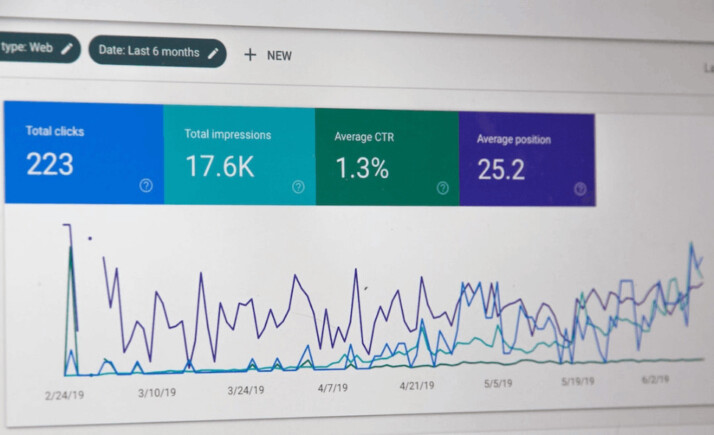Determining how to choose pillar content for blog posts is a distinct challenge. Every winning approach to content marketing rests on a solid foundation of content pillars. The goals of any content strategy need to be supported by a solid pillar structure.
Pillar contents aid in balancing your efforts between objectives like brand recognition and lead generation and the ultimate goal of making a sale. Without content pillars, your content’s reach, engagement, and brand recognition will suffer. This article defines what a content pillar means, its importance and tips on how to draw up an effective one.
What Is a Pillar Content?
A content pillar is a foundational piece of writing on a central idea or theme that can be subdivided into numerous smaller parts. The pillars of your content strategy are the most important themes to your industry and audience.
Blog posts, videos, and infographics are examples of content pillars that would appeal to your target audience. Three to five content pillars are typically chosen by brands to be the focus of consistent content creation and social media promotion.
This strategy is a systematic and time-saving approach to satisfying a client’s information needs.
Why Are Content Pillars Necessary?
Content pillars are instrumental content that boosts organic search engine results and drives additional traffic. They highlight your mastery of the subject matter, and the contextual linking structure aids search engines.
If you want to increase your rankings and authority by covering a wide range of topics, then you need content pillars and clusters. Other reasons why you need content pillars are listed below;

1. Helps in the Alignment of Priorities
The primary benefit of having pillars is that they help you concentrate on what matters. After establishing content pillars, you can confidently create content for each sale funnel section, knowing it will appeal to consumers across the purchase cycle.
2. Positions You As an Expert
Maintaining your expertise might be easier when you designate “content pillars” for the most critical topics for your audience. On the other hand, you risk spreading yourself too thin if you come up with content ideas on the fly. Your information will move from well-organized to completely unreadable in a bit of time.
3. Connotes High-Quality Content
One of the most important aspects of digital marketing is the provision of high-quality content. Increased conversions result from having more followers, more exposure, and higher engagement rates. Furthermore, you can simplify marketing efforts and search engine authority can be improved by producing quality content built on solid pillars.
4. Streamlines the Process
Not everyone will want or need what you’re selling. If you have content pillars in place, you will save time developing content for those who aren’t your target demographic and won’t convert.
Additionally, content pillars help group-related items. Content marketers need time to craft social media and blog posts; picking content pieces randomly might slow down and complicate that process. Pillars maximize productivity by standardizing content creation processes.
5. Boosts SEO, Engagement & Conversions
Topic clusters appeal not only to your intended readers but also to search engines like Google. If your content is organized around a central theme or is structured on a set of guiding principles, you will improve your SEO (SEO). Creating content in groups, or “pillar pages,” lets Google and your readers know you’re an authority on the topic.
Social media platforms use SEO strategies as well. Instagram is similar to other search engines, except that it specializes in visual content. Instagram SEO works the same way traditional SEO does for websites, boosting your profile’s exposure. You can increase social media engagement and conversions by focusing on content pillars, including timely themes, popular post formats, and trending hashtags.
7 Tips on How to Choose Pillar Content for Blog Posts
It’s crucial to the strategy’s overall effectiveness that you pick a relevant topic for your pillar page. Content well-structured around a theme rather than keywords performs better in search engine results.
Here are the most important considerations when selecting a topic for your pillar page.
1. Identify Your Target Audience
Knowing who you’re writing for is essential before dividing your content into categories. Develop a consumer persona (or several) that accurately represents your ideal clientele based on your analytics and research.
To create a detailed consumer persona, it’s helpful first to ask yourself numerous questions, such as:
- Who is your customer, both demographically and psychologically?
- How often does your typical consumer view specific types of content?
- To what extent have certain types of content consistently resonated with your target audience?
- In what way does your client communicate or display themselves on social media?
In answering these questions, you’ll gain insight into the ideal tone and voice for your brand’s content pillars and social media updates. Customers want to recognize themselves in the tone of your brand’s communications. Therefore, it’s essential to know how they use social media.
2. Determine What Your Target Market Wants
After settling on a specific demographic for your marketing efforts, it’s time to zero in on the wants and needs of that demographic. Find out their problems and see if you can solve them with your content. How can you improve their lives or convince them to buy something that will enhance their lives?
At this point, focusing on your social listening skills is crucial. Search volume and the content of social media posts often reflect underlying audience requirements.
3. Keyword Research
You must first identify your target audience’s search keywords to satisfy their needs. You also want to ensure that your social media content is providing value. Hence, it is essential to keep tabs on trending keywords.
4. Group Core Ideas Together
To develop your content’s central pillars, you must first identify your audience, their wants, and the topics they actively seek. First, compile a master spreadsheet listing all potential keyword phrases and themes. Then group similar pieces of content.
Keyword mapping and link building are two examples of technical SEO-related subjects that can be grouped. Try to develop three to five content pillars. If you use more than that, you risk diluting your message.
5. Draw up a Content Calendar
Once you’ve established your content pillars, you may go on to the next content creation phase. A detailed outline of the articles, infographics, social graphics, videos, and other forms of content you intend to produce is essential. To maintain brand consistency across social media channels, construct a content plan with post type, keywords, and publishing date.
6. Develop the Meat of the Content
Market your content before you even begin writing. You should have a firm grasp on whom you’re writing for and what they’re looking for. Develop the meat of the content, like a graphic and text, around your identified keyword words, and sprinkle in some relevant hashtags. After you’ve written something, get the word out about it on your blog and other social media sites to maximize exposure.
7. Repurpose Content Into New Formats
Repurposing material into different mediums is a great strategy to keep your content cycle going. For instance, an informative piece about the future of digital marketing can be repurposed into an infographic or film. Another option is to turn the video’s transcript into a blog post. Remember that unique content can come in various formats as long as they all fit into your content theme.
Conclusion
It is not difficult to determine how to choose pillar content for blogposts. It only takes a bit of planning. With today’s availability of keyword research tools, it is easier than before for content to draw up unique content with sub-topics. If you plan accordingly, it is possible to create engaging, niche-specific contents.
Explore All Content Pillar Articles
Developing Quality Strategy For A Pillar Page
Pillar, in construction, supports and beautifies a building. A pillar page in content marketing isn’t any different. It “supports” content…
Benefits Of Building Effective Pillar Content Model
It’s no news that SEO is dynamic and keeps evolving. One of the buzzwords that have emerged recently is the…
Effective Guide: Topic Clusters and Pillar Pages
Are you looking to take your SEO game to the next level? For businesses seeking maximum exposure, it’s time to…
Pillar Page Template Samples to Boost SEO
Pillar pages are a powerful tool for businesses looking to drive traffic, leads, and sales from organic searches. They provide…
A Guide To Effective Pillar Pages and Internal Linking
An experienced webmaster knows that an effective internal linking strategy is integral for successful website navigation. And a vital part…
Content Pillar Marketing: a Free Guide
A content pillar is a central topic in a content series that is essential to your brand. The pillar is…
